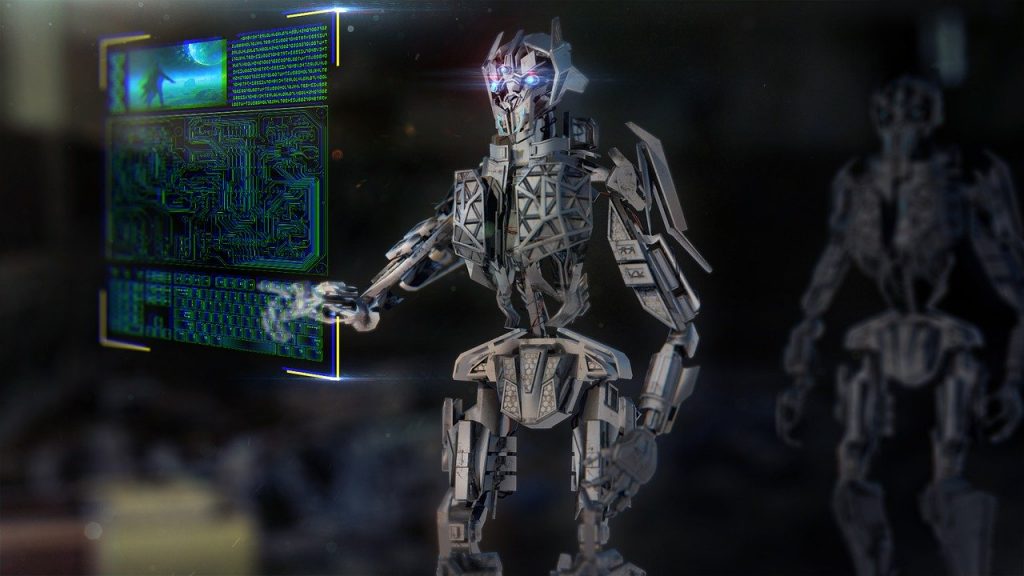Artificial Intelligence (A.I) plays an important role in our day-to-day lives. We are using it every day, sometimes even without realizing it. From Siri or Netflix to self-driving cars, we are constantly using a form of artificial intelligence. But, this intelligent technology does much more than that.
Just 4 months ago, in the last days of December, an artificial intelligence warning system send out a notification about a mysterious pneumonia strain in the city of Wuhan, China. How did the A.I. warning system know about this news? Simple, this intelligent system is programmed to sift through 100,000 articles and online posts daily, in 65 different languages. So, when the A.I. system flagged the news from China, the employees immediately saw parallels to the SARS virus outbreak. In other words, this A.I. system sent out a warning ahead of the World Health Organization. To contrast that, the World Health Organization scarcely send out notice 9 days later.
The same artificial intelligent system predicted where other Asian city outbreaks could happen. Just by analyzing large volumes of data containing travel itineraries and flight paths, the A.I. was able to accurately predict where other outbreaks would happen.
It’s no wonder that this amazing technology is playing an important role in the fight against the COVID-19 pandemic.
How is Artificial Intelligence helping the fight against COVID-19 now?
The coronavirus outbreak has become a worldwide concern. With a major impact on public health and the world economy, the healthcare issues have taken the center stage.
In the middle of this crazy new world, all the great minds and technologies are coming together. The technology industry is racing to find new solutions to manage and fight the COVID-19 pandemic. A.I. software development, together with tracking technologies, can be the secret weapon against this pandemic.
Let’s take a look at some ways where A.I. and machine learning development solutions can detect, or fight against the COVID-19 virus.
1. Disinfecting robots
In the time of a pandemic, we need to make sure that all our health care facilities are disinfected. Also, it’s important to limit the exposure of the medical staff in this process.
With the help of A.I, robots can now move around health care facilities spreading UV light to disinfect rooms contaminated with viruses or bacteria. In just 10-20 minutes, without any human presence, these robots can disinfect large spaces.
How does it work?
The robot has bulbs that emit UV-C light. This process destroys microbes, bacteria, and viruses by damaging their RNA (COVID-19 defense system), so they can’t multiply.
2. Tracking the virus
If we take the example of the A.I. warning system, that predicted where other Asian city outbreaks will be, it’s becoming more obvious that we have the technology for tracking the virus. With the help of natural language processing (NLP), systems like this can track the text of hundreds of thousands of sources to find news and public statements about the health of people, all over the world.
Other intelligent systems can estimate the risk of a disease spreading by analyzing factors like illness’ symptoms, mortality rate, and the availability of treatment in different areas.
3. Drones
In countries like Spain or France, the police force is already using drones to enforce coronavirus lockdown. But these “flying robots” can be used in other ways too. From shipping medical supplies to deliver medicine or food to people who are in lockdown areas. They can also be equipped with thermal sensors, to detect people with fever. In some cases, the drones are used by the authorities to decontaminate different areas.
4. Fever detection in public areas
As we saw in airports or other public spaces, another way that Artificial Intelligence can detect the COVID-19 virus is by using cameras equipped with thermal sensors.
Currently, a more complex A.I system is used in Beijing’s Railway Station. This intelligent system combines computer vision and infrared. Therefore, it is capable to detect the forehead temperature of approximately 200 people each minute. With an error margin of only 0.5 degrees Celsius! As a result, the system can alert the authorities if it detects a person with a temperature above 37.3 degrees Celsius.
The Chinese government is also using some controversial technology and A.I. in trying to track and identify each citizen who is a coronavirus suspect. With the help of the surveillance systems and face recognition, the authorities are capable to identify people who might have a fever and be more likely to have the virus.
China has also developed a monitoring system called the Health Code. Due to Big Data technology, this intelligent system can easily identify and assesses the risk for each individual. Starting from data based on their travel history, how much time they have spent in virus zones, or potential exposure to people carrying the virus, the system can predict who represents a potential risk. Depending on each factor, the citizens are assigned a color code that indicates if they should be quarantined or allowed in public.
5. Supercomputers and coronavirus vaccine
The world has many supercomputers that can help researchers to fast-track the development of a cure or vaccine. NASA, IBM, Huawei, and other major tech companies are offering their speedy supercomputers to help combat the new coronavirus.
Why a supercomputer?
The answer is Speed! These systems can run calculations and model solutions and is much faster than any standard computer processing. This way, researchers and scientists can find out the most effective existing drug that could combat COVID-19 much more quickly.
6. A.I. may help identify coronavirus in X-rays
In the coronavirus pandemic context, many companies are making A.I. systems that detect COVID-19 from chest x-rays, to give doctors a way to quickly triage and screen potential cases. Sounds cool, right?
But the radiologists aren’t convinced, yet!
Radiological organizations have released statements declaring that they do not currently recommend the use of CT scans for COVID-19 detection.
The major concern?
The influenza season is not over yet. There are large numbers of patients with common lung infections like viral pneumonia. It would be hard to tell the difference between a patient with COVID-19 and another one with a lung infection. As a result, the doctors still recommend a lab test for a valid confirmation.
In a pandemic world, technology like artificial intelligence, and data science have become critical in helping countries effectively deal with the outbreak.
Many companies, scientists, and researchers are working together to bring new technologies innovations that can help us in the battle against the COVID-19. Therefore, until another technological and scientific discovery: Stay Safe!

